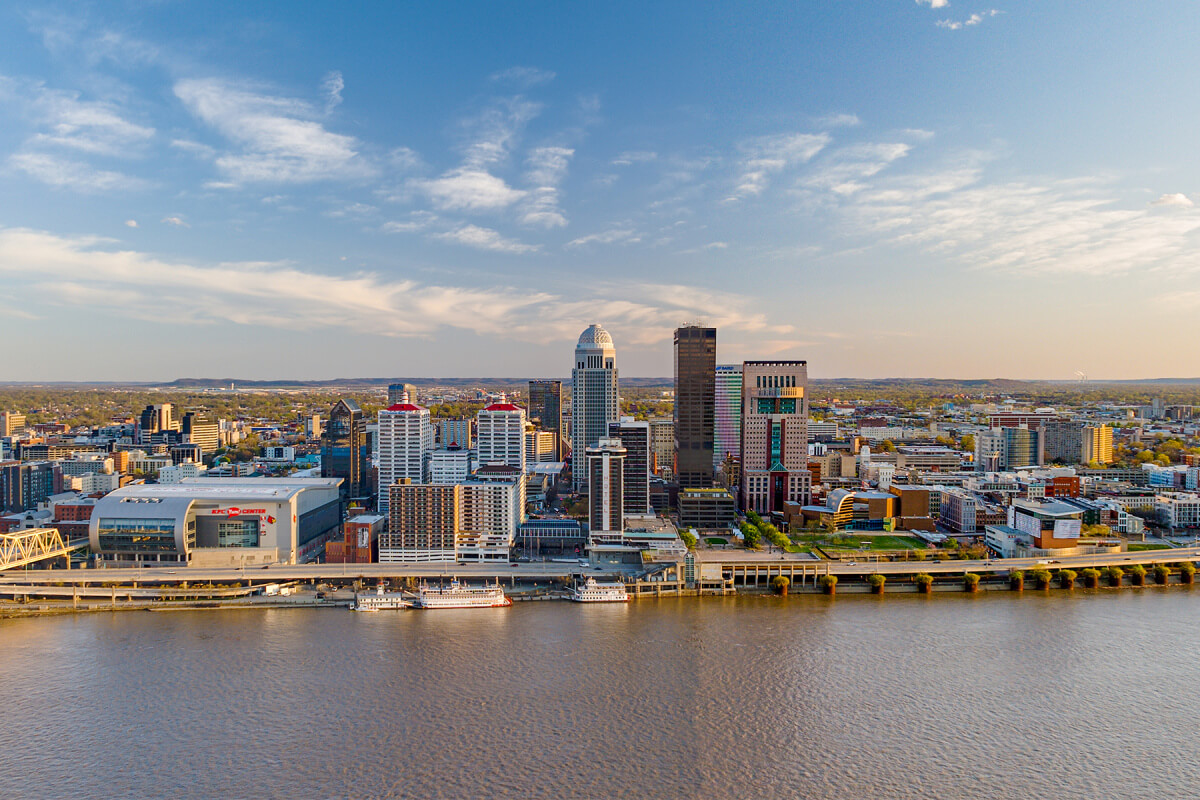Louisville’s history runs deep, packed with events that have significantly contributed to Civil Rights, Southern culture, and beyond. Today, we’re highlighting seven lesser-known facts about the Derby City’s Black History. These may not all be new to true history buffs, but we bet you’ll pick up an interesting new fact or two!
1. One of the longest-running African-American newspapers in the country was established in Louisville.
The Louisville Defender has been a powerful voice for the Black community for over 90 years. It offers weekly local and national coverage on topics related to Black culture, racial justice, and Civil Rights. Established in 1933, it reported Louisville’s Black news, which was rarely published in white newspapers.
In 1936, it was purchased by Frank Stanley, Jr., chair of the Allied Organization for Civil Rights in Louisville and one of the people who helped plan the March on Frankfort, led by Martin Luther King Jr. and Jackie Robinson.
3. Louisville is home to the first library in the U.S. to exclusively serve the African-American community.
After leaders (including Albert Meyzeek, the principal of Central High School) championed African-American library services, the Western Colored Library opened in 1905. It was the first free public library in the nation for African Americans, and it was staffed entirely by African Americans.
Today, it is known simply as the Western branch of the Louisville Free Public Library system. The space features the African American Archives Reading Room, which houses important historical papers relating to the library’s opening and an extensive collection of material focusing on the Black experience.

4. Louisville was once home to the largest concentration of free people of color in the region.
By 1860 (five years before the 13th Amendment to the Constitution was ratified, ending slavery), Louisville was home to the largest concentration of free people of color in all of Kentucky and the upper South, west of Baltimore. In fact, the free African-American population of Louisville increased from 232 to 1,917 between 1830 and 1860.
During this time, three individuals emerged as the principal architects of Black Louisville: Shelton Morris, who founded the first Black business in Louisville in 1832; his brother-in-law Washington Spradling, who became the first African American in Kentucky to accumulate more than $100,000; and Eliza Curtis Hundley Tevis, who became the only significant free Black land-owner in the area.
By the 1850s, the leadership and efforts of the trio led to the founding of eight independent Black churches in the city.
5. Louisville was home to one of the first Black professional baseball teams in the U.S.
There’s more to Derby City’s baseball history than the Louisville Slugger baseball bat. In 1887, the Louisville team — dubbed Fall City — joined the League of Colored Baseball Clubs, the first national league for Black players.
Though the league didn’t last very long, multiple independent, semi-pro, Louisville-based Black teams played in exhibition tours throughout the Commonwealth. These include the Negro National League’s White Sox in 1931, the League’s Black Caps in 1932, and the Buckeyes in 1949.
Former Kentucky governor A.B. “Happy” Chandler served as baseball commissioner from 1945 to 1951 and is credited as instrumental in the racial integration of the major leagues in 1947.

5. Central High School was originally called Central Colored High School.
An 1870 city charter provided that schools for African American children be established, and a committee was formed. Louisville’s first public schools for African Americans were opened inside the Center Street African Methodist Church and the Fifth Street African Baptist Church.
A dedicated building was eventually erected in 1973, becoming home to Central Colored High School. That school moved to 12th and Chestnut Streets in 1952 and is known today as Central High School.
6. Downtown Louisville was the site of significant Civil Rights demonstrations.
In the 1950s, Fourth Street in Downtown Louisville housed most of the city’s restaurants, department stores, and theaters. Many of the white-owned establishments refused to serve African Americans, and by the 1960s, protests around the South inspired Black students in Louisville to lead mass demonstrations against public discrimination.
Though most of those businesses no longer exist, historical markers highlight these important events and honor the students’ activism on the Louisville Downtown Civil Rights Trail.

7. Dr. Martin Luther King Jr. had close ties to Louisville.
A.D. King was Dr. King’s brother and a pastor at Louisville’s Zion Baptist Church. In addition to making trips to Derby City to visit his brother, Dr. King made an appearance at the University of Louisville’s Brandeis School of Law — about a year before his death — to speak at a meeting of the Southern Christian Leadership Conference that was taking place in town.
After hearing Dr. King and meeting him in person, local Civil Rights leader Raoul Cunningham served as the head of the Louisville NAACP for 20 years, crediting Dr. King as an essential influence on his life’s work.
For more information about Black History in Louisville, check out these local resources:
- The Black Ballplayers exhibit at the Louisville Slugger Museum & Factory
- Kentucky Black Trailblazers
- Muhammad Ali Center
- Kentucky Center for African American Heritage
- Roots 101 African-American Museum
**********
Give your inbox the Southern makeover it deserves. Subscribe to our daily emails.



















